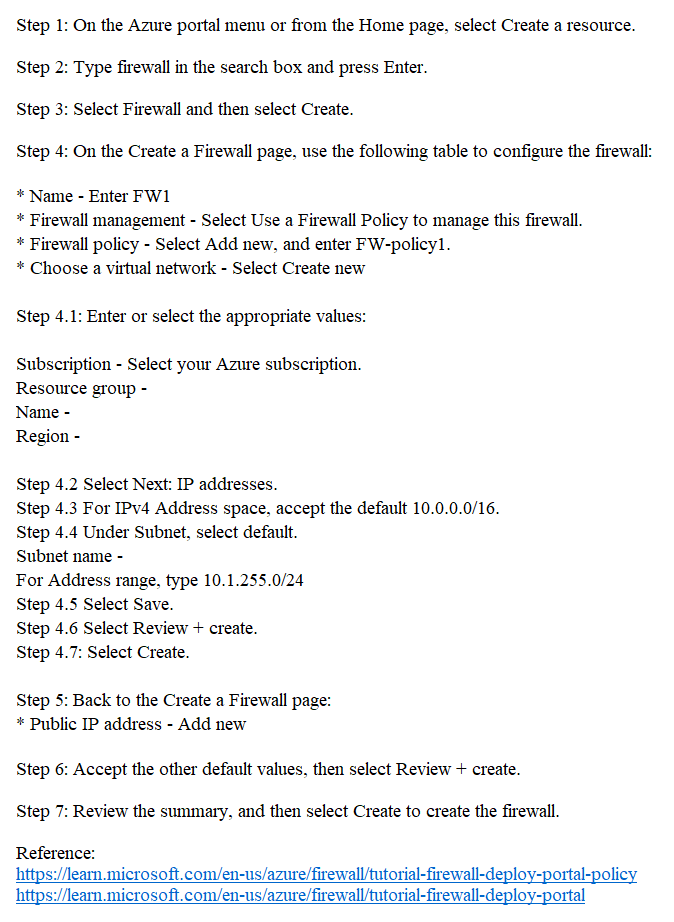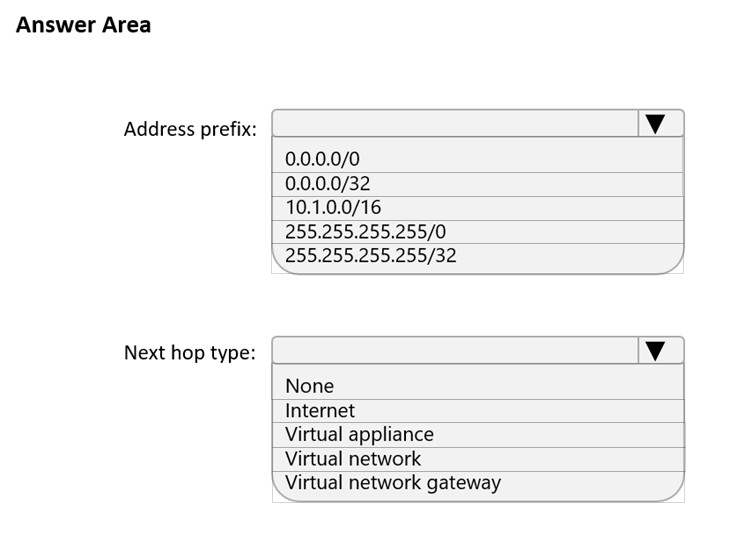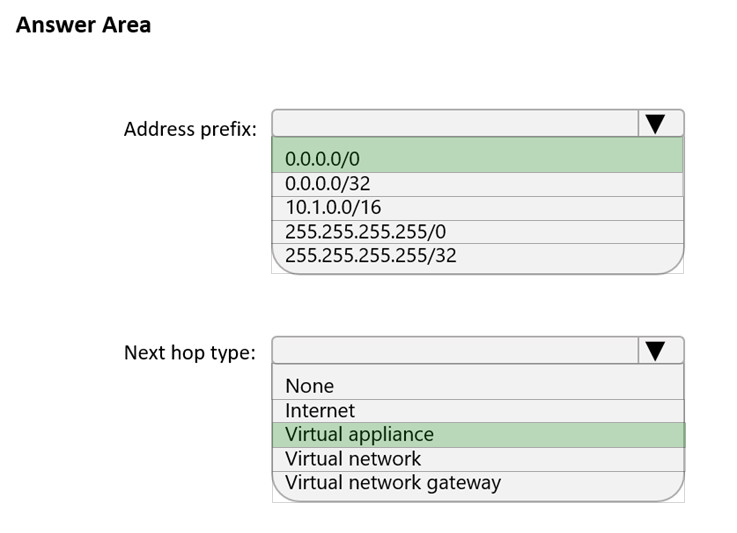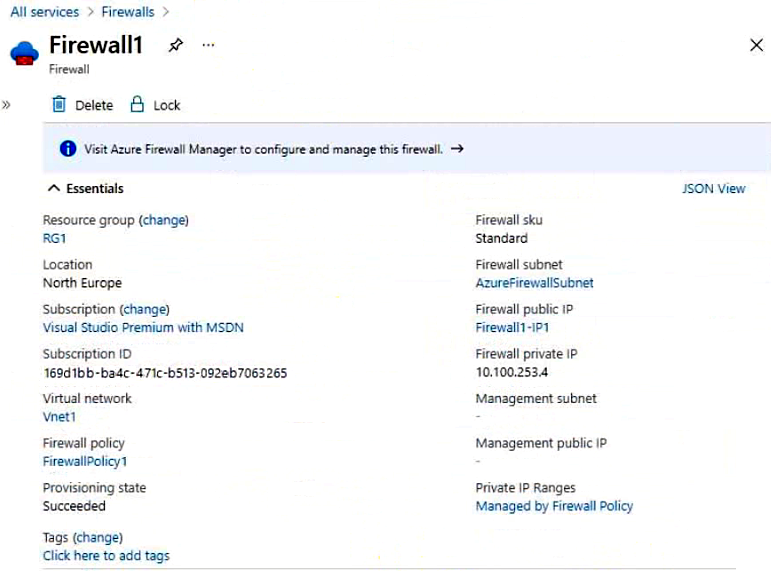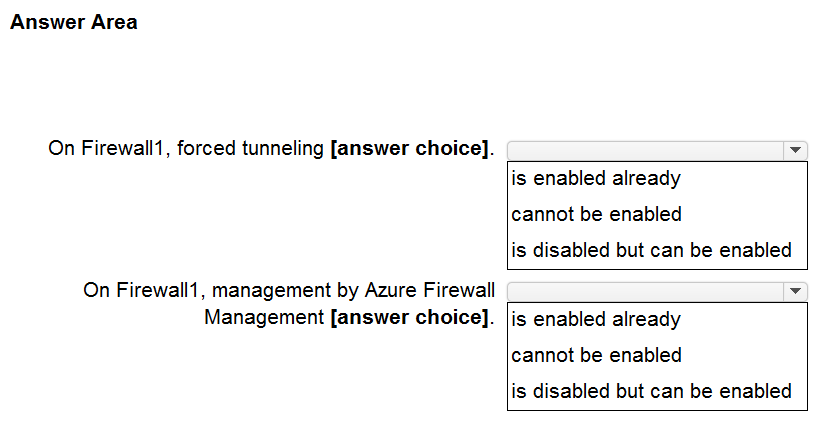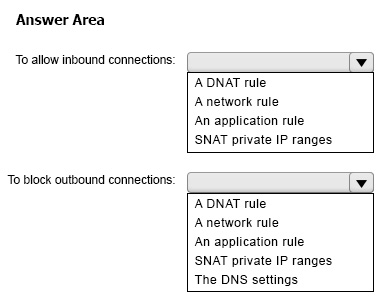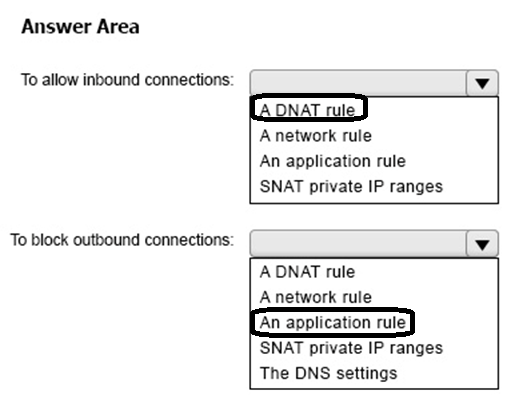You have an Azure subscription that contains the following resources:
• A virtual network named Vnet1
• Two subnets named subnet1 and AzureFirewallSubnet
• A public Azure Firewall named FW1
• A route table named RT1 that is associated to Subnet1
• A rule routing of 0.0.0.0/0 to FW1 in RT1
After deploying 10 servers that run Windows Server to Subnet1, you discover that none of the virtual machines were activated.
You need to ensure that the virtual machines can be activated.
What should you do?
A. On FW1, create an outbound network rule that allows traffic to the Azure Key Management Service (KMS).
B. On FW1, create an outbound service tag rule for Azure Cloud.
C. Deploy a NAT gateway.
D. On FW1, configure a DNAT rule for port 1688.
You have an Azure subscription that contains a virtual network named Vnet1. Vnet1 contains 20 subnets and 500 virtual machines. Each subnet contains a virtual machine that runs network monitoring software.
You have a network security group (NSG) named NSG1 associated to each subnet.
When a new subnet is created in Vnet1 an automated process creates an additional network monitoring virtual machine in the subnet and links the subnet to NSG1.
You need to create an inbound security rule in NSG1 that will allow connections to the network monitoring virtual machines from an IP address of 131.107.1.15. The solution must meet the following requirements:
• Ensure that only the monitoring virtual machines receive a connection from 131.1071.15.
• Minimize changes to NSG1 when a new subnet is created.
What should you use as the destination in the inbound security rule?
A. an application security group
B. a service tag
C. a virtual network
D. an IP address

